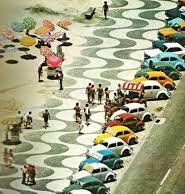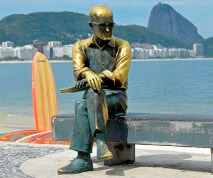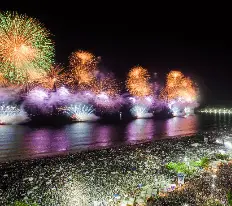Blog
Curiosidades Sobre a Praia de Copacabana no Rio de Janeiro
- 13 de February de 2020
- Posted by: Amanda Ennes
- Category: Rio de Janeiro
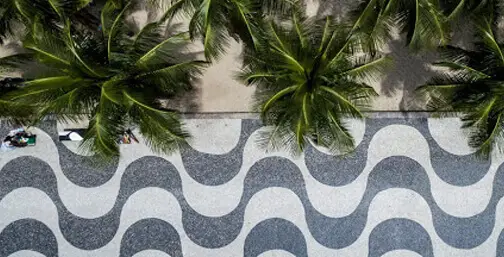
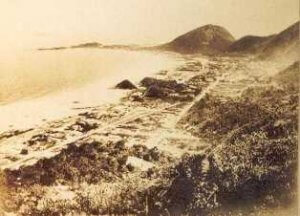 A praia de Copacabana no Rio de Janeiro é uma das praias mais famosas do planeta. Todo mundo quer visitá-la e todos sempre se apaixonam por ela. Mas nem sempre foi assim.
A praia de Copacabana no Rio de Janeiro é uma das praias mais famosas do planeta. Todo mundo quer visitá-la e todos sempre se apaixonam por ela. Mas nem sempre foi assim.
No século XIX, as pessoas viam Copacabana como uma área arenosa inóspita e insalubre. Os únicas pessoas que morava lá eram pescadores e suas famílias.
Em 1892, o governo construiu um túnel — agora Túnel Alaor Prata — ligando Copacabana e o centro da cidade do Rio. Depois disso, durante os primeiros anos do século XX, uma linha de bonde começou a conectar Copacabana a outros bairros do Rio de Janeiro. Foi aí que as pessoas começaram a visitar a zona sul do Rio, abraçando a areia branca, a água azul, a brisa fresca e o clima delicioso da praia de Copacabana.
Table of Contents
ToggleCuriosidades Sobre a Praia de Copacabana
Calçadão da Praia de Copacabana
O calçadão da praia de Copacabana é o mais famoso do mundo. Foi construído em 1906 pelo prefeito Pereira Passos. Ele teve a ideia do design inspirado na Praça do Rocio, em Lisboa. De fato, todas as pedras usadas para construir o calçadão de Copacabana vieram de Portugal. Na primeira construção, ss ondas do desenho do calçadão foram projetadas perpendicularmente ao mar. Anos mais tarde, o governo do prefeito Paulo de Frontin decidiu reformar o calçadão, projetando as curvas de forma a acompanhar o fluxo do oceano. O calçadão tem 4 km de extensão, do Leme ao Forte de Copacabana.
A Areia Dourada da Praia de Copacabana
A enorme faixa de areia que ronda a praia de Copacabana não é resultado de um processo natural. Nos anos 70, uma grande reforma foi feita em Copacabana e um grande aterro aumentou a área da praia. Isso não foi apenas algo bom para os banhistas, mas as autoridades conseguiram organizar melhor o sistema de esgoto e controlar as inundações na área.
Escolhendo o Nome de Copacabana
Copacabana era chamada Sacopenapã até o final do século XVIII. Somente após a construção da igreja de Nossa Senhora de Copacabana, o bairro foi oficialmente renomeado Copacabana. Sacopenapã na língua tupi significa “caminho dos pássaros”. Copacabana também tem um apelido simpático: Princesinha do Mar.
Estátua de Carlos Drummond de Andrade
Carlos Drummond de Andrade foi um famoso escritor e poeta brasileiro. Uma estátua na praia de Copacabana presta homenagem a ele e se tornou um ponto turístico no Rio de Janeiro. O monumento de bronze, localizado entre os postos 5 e 6, retrata Drummond sentado em um banco olhando para as pessoas que ali passam e a movimentada avenida à sua frente. Muitos turistas sentam ao seu lado todos os dias para tirar uma foto.
As Olimpíadas de Verão de 2016
Durante os Jogos Olímpicos de Verão de 2016, a Praia de Copacabana serviu de palco para as competições de vôlei de praia, triatlo e maratona aquática.
Ano Novo na Praia de Copacabana
Mais de 2 milhões de pessoas passam a virada de Ano Novo na praia de Copacabana todos os anos. O que torna este evento tão famoso são os shows gratuitos durante a noite, os incríveis fogos de artifício e a grande animação que atrai a todos. Várias telões estão espalhadas por toda a praia, possibilitando que todos possam desfrutar do evento. As pessoas se reúnem lá para celebrar a vida e festejar durante toda noite. Dez plataformas colocadas no mar são responsáveis por 15 minutos de fogos de artifício sem parar, criando um espetáculo incrível no céu.
Ipanema e Copacabana são bairros irmãos. Se você também quiser saber mais sobre a história de Ipanema, consulte esta postagem no blog.
Estude português no Rio de Janeiro, Brasil. A Caminhos Language Center oferece os melhores cursos de português no Rio, juntamente com atividades gratuitas todos os dias, suporte a vistos de estudantes e casas de família no Rio de Janeiro.


 English
English Deutsch
Deutsch Français
Français Español
Español